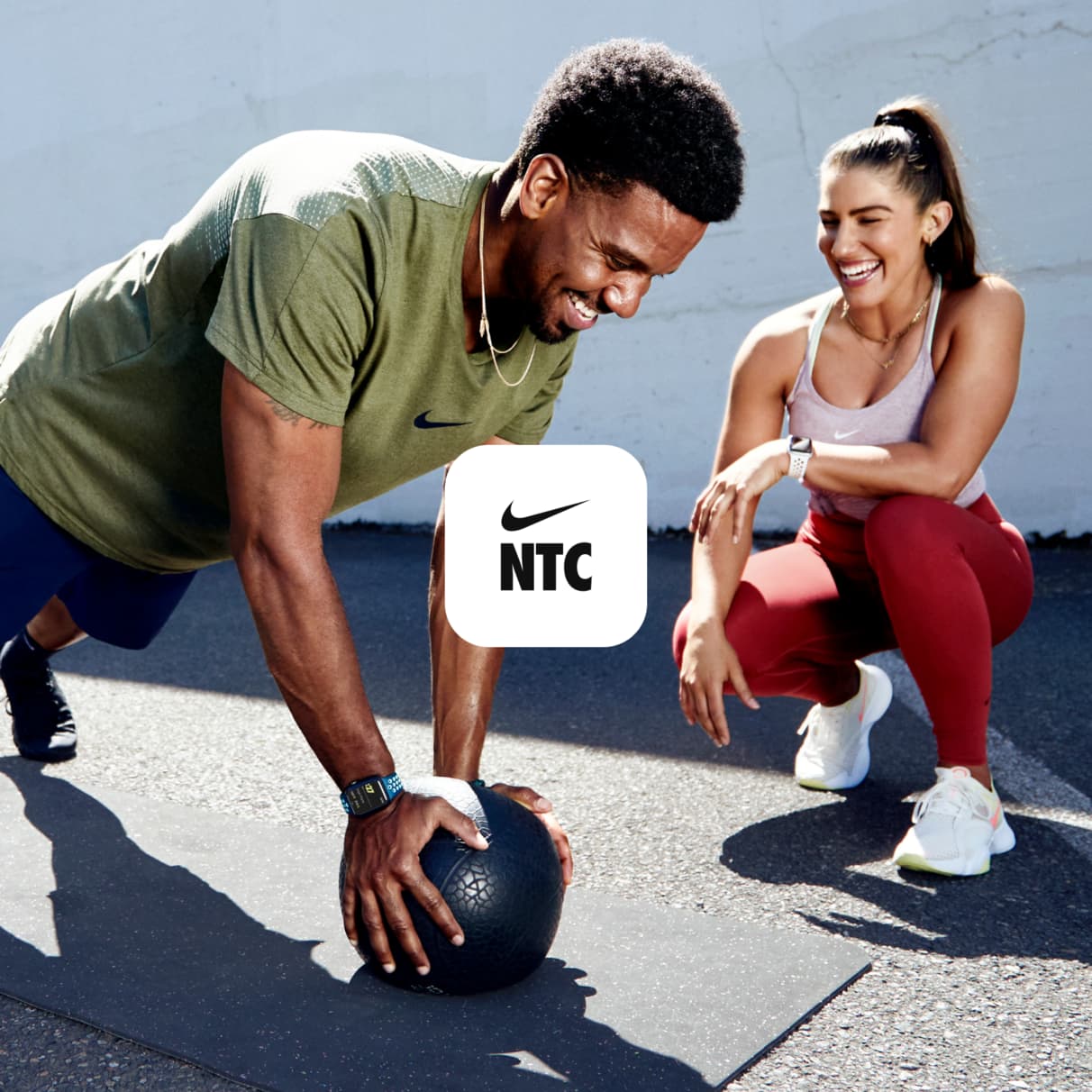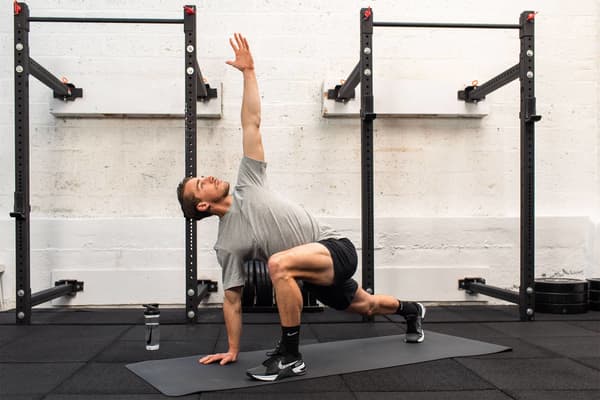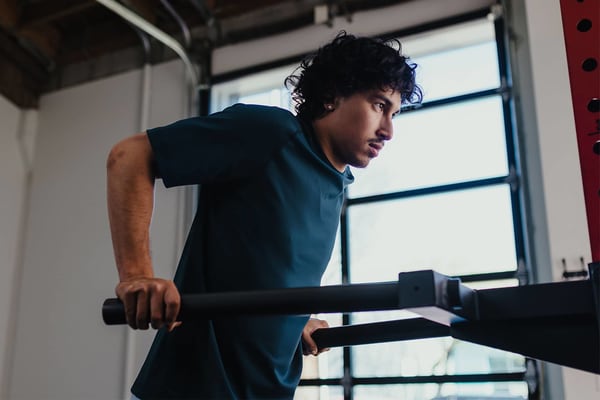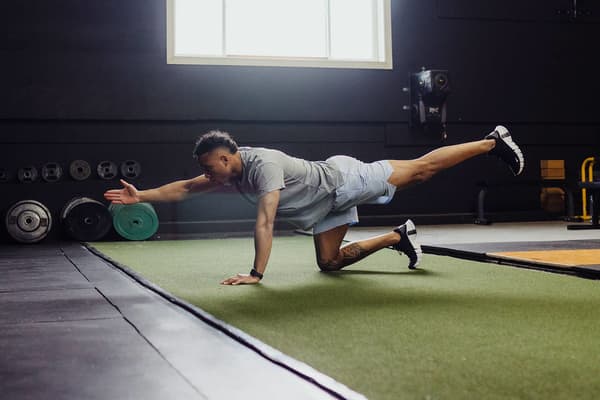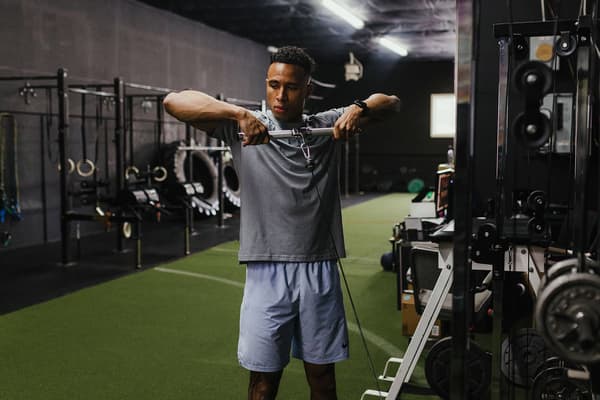Why the Dead Bug Exercise Belongs in Your Next Workout
Sports & Activity
Give some love to your core muscles and hip flexors, without getting off the ground.

Although the dead bug exercise belongs in the category of core strengthening moves, it does much more than that, according to Bill Kelley, D.P.T., C.S.C.S.
In addition to recruiting the hip flexor muscles — five muscles essential for efficient movement — dead bugs also involve your brain.
"The arms and legs moving reciprocally and in opposite directions creates a high mental demand to perform the motion correctly, while keeping the core stabilized," he said.
Rocky Snyder, C.S.C.S. and author of the strength training guide, "Return to Center,” said that "the purpose of the dead bug exercise is to encourage the muscles that connect the rib cage and pelvis with one another to maintain a level of rigidity while the limbs move.”
Having the arms and legs move independent of the hips and torso isn't always an easy feat, Snyder said. "This requires deeper musculature control and strength of the area around the spine."
All of that adds up to better movement, whether you're playing sports, picking up a laundry basket, or sprinting to catch a bus.
(Related: What Is Functional Training?)
Why Add Dead Bugs to Your Workout
Since there are many options for developing more core strength, the dead bug exercise may not be your first choice for core work. Here's why you may want to reconsider:
(Related: The Quick, 15-Minute Ab Workout Personal Trainers Love)
1. It's easier on your knees and wrists than the traditional bird dog exercise.
Particularly if you're experiencing knee joint issues that make kneeling difficult, or you have wrist tenderness, dead bugs can be more protective, said Feder. That's in contrast to a movement like bird dogs, which require being on hands and knees.
2. It supports your hip flexors.
True to their name, the hip flexors aid in flexing the hips, so you can bring your knees closer to your chest. They're essential for maintaining stability in the pelvis, and they activate every time you take a step. Too much sitting can shorten these muscles, causing them to tense up. If you're trying to counteract hours of desk time and create more balance in the hips, dead bugs can be beneficial.
3. It helps reduce the risk of injury in the back.
In a 2019 column found in Strength and Conditioning Journal, researchers noted that many studies have found the benefits of core stability training on injury prevention for the lower back in particular, and they suggested that the dead bug exercise is a strong choice for this. They add that the use of dead bug exercises with the appropriate progression can also be effective for some people with lower back pain as part of a rehabilitation program — ideally, prescribed by a licensed physical therapist.
In general, the combination of core stability, muscular control, and mental focus that are required for dead bugs make the exercise a strong addition to any workout.
Make Sure Your Form Is Correct Before Starting
Although the dead bug exercise involves only a few movements, there are still some important aspects of form to keep in mind if you want to focus on the right muscles.
"The biggest error with the dead bugs is letting the back arch up while extending the arm and leg," Kelley said. "The back needs to remain fully in contact with the floor. If the vertebrae lift up, the exercise will not be effective in serving its goal."
Also, moving too fast can be another issue, as it reduces the benefits of learning control and activating those deeper muscles providing stability.
This is a modal window.
How To Do a Dead Bug Exercise
If you’ve never done a dead bug exercise before, Kelley broke down the key steps:
- Lie on your back with your arms pointing toward the ceiling.
- Bend the knees and bring them up to a 90-degree angle (like a flipped-over table pose).
- Reach your right arm straight back behind you so that it’s parallel to the floor.
- At the same time, straighten the left leg and let it hover a few inches off the ground.
- Keep the lower back connected to the floor rather than letting it arch, which may include a very slight pelvic tuck.
- Slowly bring both the arm and leg back to the starting position.
- Repeat with the left arm and right leg.
Challenge Yourself With Variations

If you already use the dead bug exercise but want some variety, there's one major variation to make the movement more challenging, according to trainer Jesse Feder, C.S.C.S.
"My favorite variation is to hold a yoga ball or medicine ball between your arms and legs," he said. Here’s how you do it:
- Get into a standard dead bug position.
- Grab the yoga ball or medicine ball and hold it against your legs.
- Perform the dead bug without letting the ball fall, which means as you extend one leg out and the opposite arm, you move the ball slightly to one side so it stays in position against the bent leg.
That movement causes the core muscles to contract more in order to keep the ball in place, Feder said.
Another option is adding a light weight like a small dumbbell in each hand, as well as ankle weights. Both of these, alone or together, can cause your core muscles to activate more as they try to keep you stabilized. Before adding any variations like these, it may be a good idea to consult your physician or a personal trainer to ensure it's safe for you to perform.
Words by Elizabeth Millard, A.C.E. C.P.T.
